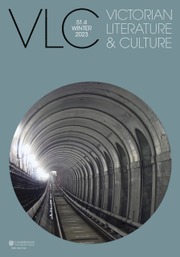No CrossRef data available.
Article contents
The Pickwick Papers and “Sam Weller's Scrap Sheet”: The Making of a Print-Neutral Public
Published online by Cambridge University Press: 03 January 2025
Abstract
The unprecedented popularity of Charles Dickens's first serial novel, The Posthumous Papers of the Pickwick Club (1836–37), among all classes of readers helped shape Britain's mass reading public. The irrevocable change that Dickens effected on Victorian print culture is well established, but there is little discussion of how his early works interpreted the print culture in which they first circulated. I approach Pickwick according to the perspective of a little-known contemporary response, “Sam Weller's Scrap Sheet (1837),” printed by John Cleave. “Sam Weller's Scrap Sheet” cleverly reproduces the narrative, form, and material of Pickwick according to the perspective of a laboring-class reader. Its attention to print material and class identity informs a new reading of Pickwick: in order to unify disparate reading and writing cultures, I argue, Pickwick fictively binds together materials sourced from a variety of print cultures and redefines them unanimously as “paper.” As the “Scrap Sheet” makes clear, this effaces the productive agency of the “papers’” originating contexts. Tying together discussions from Pickwick’s reception history, print history, and media studies, this paper more broadly examines the tensions that accompanied shifting relationships to material print in early-industrial England.
- Type
- Research Article
- Information
- Copyright
- Copyright © The Author(s), 2025. Published by Cambridge University Press



